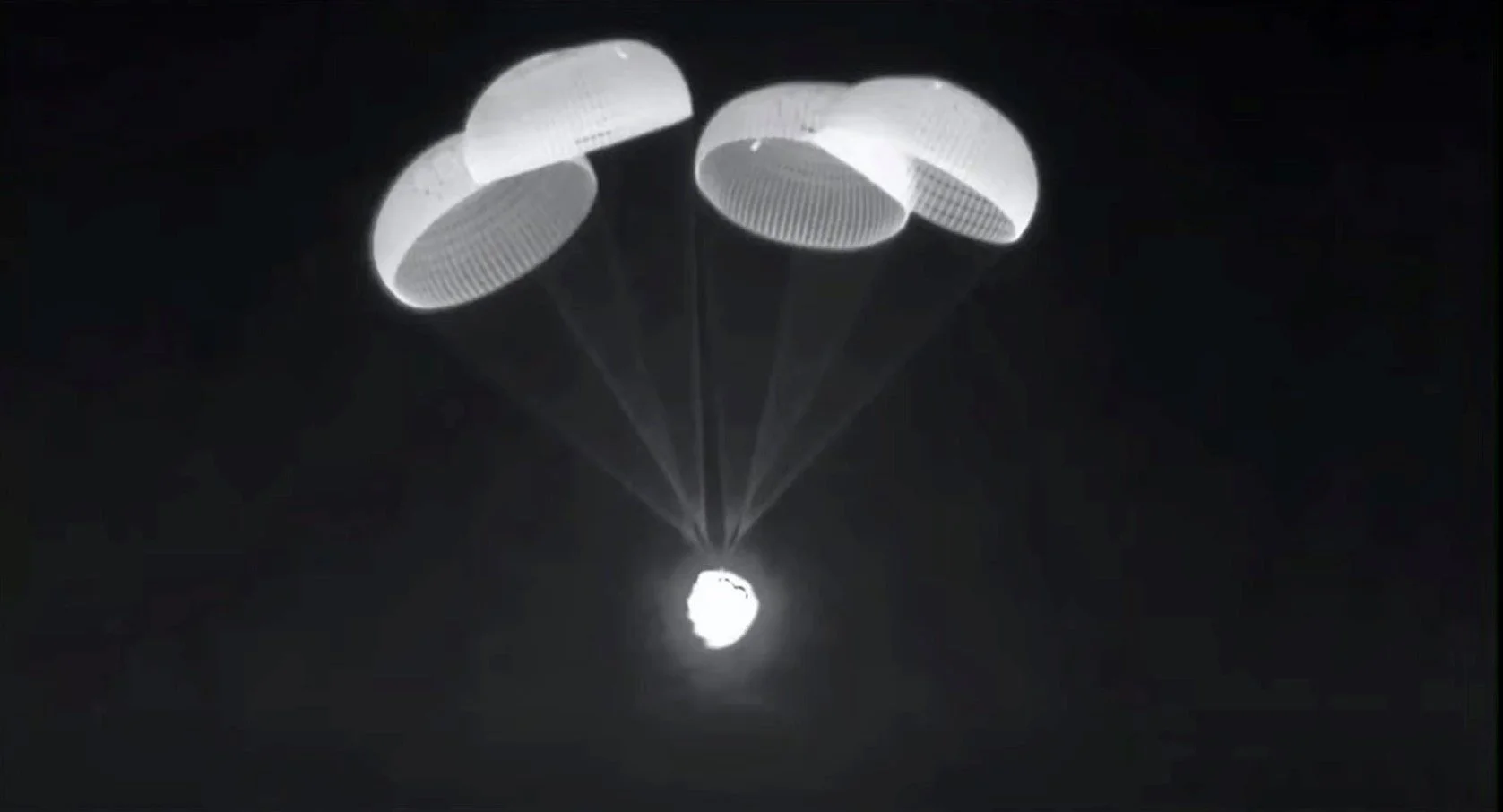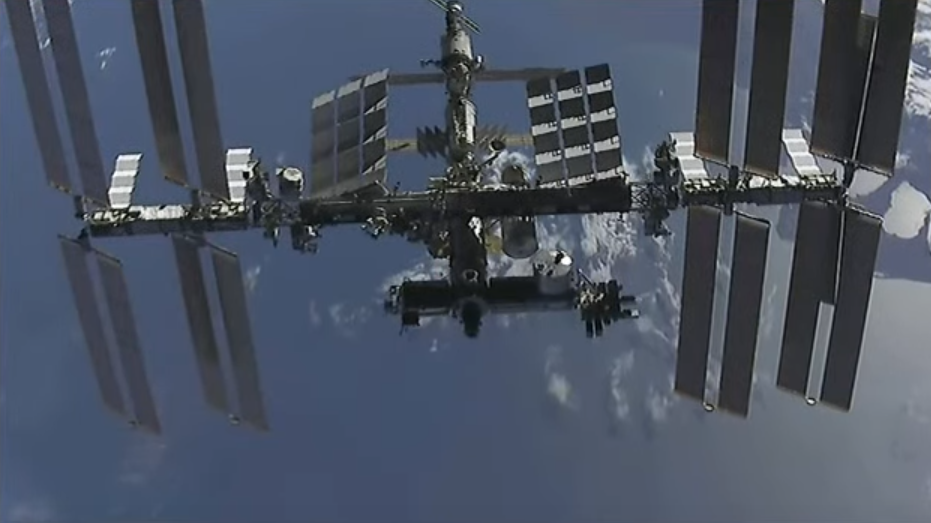Crew-2 Dragon astronauts return to Earth after 199 days
/After nearly 200 days in space, four multinational astronauts returned to Earth in SpaceX’s Crew-2 Dragon, splashing down just off the coast of Pensacola, Florida.
Aboard were NASA astronauts Shane Kimbrough and Megan McArthur, as well as Japanese astronaut Akihiko Hoshide and European Space Agency astronaut Thomas Pesquet.
Splashdown in the Gulf of Mexico occurred at about 10:33 p.m. EST Nov. 8 (03:33 UTC Nov. 9), some eight hours after undocking from the International Space Station, where the crew had resided since April.
Still aboard the outpost are Russian cosmonauts Anton Shkaplerov and Pyotr Dubrov and NASA astronaut Mark Vande Hei. They are expected to return to Earth in March 2022 aboard their Soyuz MS-19 spacecraft.
Following Crew-2 splashdown, over the course of about 30 minutes, the capsule, named Endeavour, was brought aboard a specially-outfitted SpaceX recovery ship named GO Navigator.
After it was secured and it was determined there were no hazardous gases leaking, recovery personnel began opening the hatch to help the crew outside the capsule and onto the boat deck.
First out was McArthur. She was placed in a stretcher, which is a normal practice for returning long-duration crews from the International Space Station. Next out was Kimbrough, followed by Hoshide and then Pesquet -- all placed in stretchers.
Once they were out, they went into a private cabin where they were given initial medical checks and allowed to change out of their entry suits. The four are then expected to be flown to shore where they are set to part ways to their respective agency headquarters.
“We’re happy to have Shane, Megan, Aki, and Thomas safely back on Earth after another successful, record-setting long-duration mission to the International Space Station,” said NASA administrator Bill Nelson in an agency news release. “Congratulations to the teams at NASA and SpaceX who worked so hard to ensure their successful splashdown. NASA’s Commercial Crew Program continues to demonstrate safe, reliable transportation to conduct important science and maintenance on the space station.”
The official mission time for the Crew-2 astronauts was about 199 days, which makes it the longest single spaceflight by a U.S. crewed spacecraft to date. This was actually the second flight for this particular capsule -- C206 Endeavour. It was first used by the Demo-2 NASA astronauts Doug Hurley and Bob Behnken for their 63-day flight in the summer of 2020.
Endeavour has now been in space for 260 days over its two flights.
This spacecraft is expected to be refurbished and flown on another flight into orbit. All Crew Dragon spacecraft are expected to be used at least five times.
Kimbrough, who was on this third spaceflight, has now accumulated 388 days in orbit, which includes a space shuttle mission in 2008 and a long-duration mission at the ISS between 2016 and 2017.
McArthur was on her second spaceflight. Including her space shuttle flight in 2009, she now has a career total of roughly 212 days in orbit.
For Japanese astronaut Hoshide, he completed his third spaceflight. He previously flew aboard a space shuttle in 2008 and participated in a long-duration ISS expedition in 2012. His cumulative total is now about 339 days in space.
Finally, ESA astronaut Pesquet completed his second flight to space. His first flight was also a long duration mission aboard the ISS between 2016 and 2017. He has now accumulated some 395 days of spaceflight experience.
Crew-2 Dragon takes a lap around the ISS
After undocking from the space-facing port of the Harmony module at about 2:05 p.m. EST (19:05 UTC) Nov. 8, the trip home started with a rare fly around of the entire International Space Station.
This was the first fly around performed by a Crew Dragon spacecraft and the first since a Soyuz spacecraft flew around the outpost in 2018.
These fly arounds are done to get external views of the ISS to inspect areas that aren’t normally seen by inspections via cameras based on the outpost itself. Photos of the orbiting laboratory were taken by Pesquet through the window in the forward hatch of Crew Dragon.
Fly arounds were done quite frequently by the space shuttles during the construction phase of the ISS between 1998 and 2011. This allowed for various pictures of the ISS as it grew over the years.
While the overall structure of the ISS has been finished since 2011. There have been some new additions recently.
This includes a new commercial experiment airlock, a new Russian science module, some external platforms as well as two new roll-out solar arrays.
Additionally, more arrays and new modules are expected over the coming years as the ISS enters its likely final decade of operations.
The return home
Once the Crew-2 Dragon fly around was completed, the spacecraft began a series of departure burns to leave the ISS and begin preparations for deorbit and splashdown later in the day.
The first major action for the deorbit was the separation of the unpressurized trunk section at about 9:35 p.m. EST (02:35 UTC Nov. 9). This was followed a few minutes later by a 16.5-minute-long deorbit burn using the four forward Draco thrusters to slow the vehicle down by several hundred miles per hour -- just enough for it to intersect with the thicker part of Earth's atmosphere.
After the deorbit burn, the nose cone closed to protect the forward thrusters as well as the docking mechanism.
Crew-2 Dragon began entering the atmosphere at 10:20 p.m. EST. Over the next several minutes the drag of reentry began to cause the four astronauts to experience up to four times the force of gravity as the atmosphere slowed the capsule down.
During this time, because of the plasma buildup around the capsule, there was an expected seven-minute signal blackout with the capsule and its crew.
Right around the end of the blackout period, the capsule reached a velocity of about 350 miles per hour, allowing the drogue chutes to be deployed. This set the stage for the main parachutes to soon thereafter, ultimately slowing the capsule to 15 miles per hour for splashdown.
A shifting schedule
It was initially planned for the Crew-2 astronauts to return to Earth after the Crew-3 astronauts launched to the ISS. This would have allowed for a “direct” handover of these two crews.
However, because of poor weather in the ascent corridor for Crew-3, combined with delays because of a minor medical issue, and because Crew Dragon Endeavour was coming up on the 210 days in space that it is certified for, NASA opted to do an “indirect” handover.
Crew-3, which will include NASA astronauts Raja Chari, Tom Marshburn and Kayla Barron, as well as European Space Agency astronaut Matthias Maurer, is currently slated to launch at 9:03 p.m. EST Nov. 10 (02:03 UTC Nov. 11).
Docking at the ISS is expected at 7:10 p.m. EST Nov. 11 (00:10 UTC Nov. 12). They will be flying in a new Crew Dragon, which is named Endurance.
The Crew-3 astronauts are expected to remain at the ISS until April 2022.
NOTE: While this article was written by Derek Richardson, it was originally published at Spaceflight Insider.










